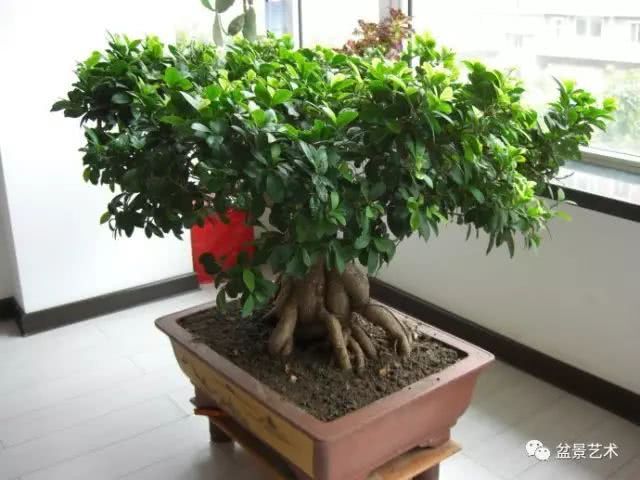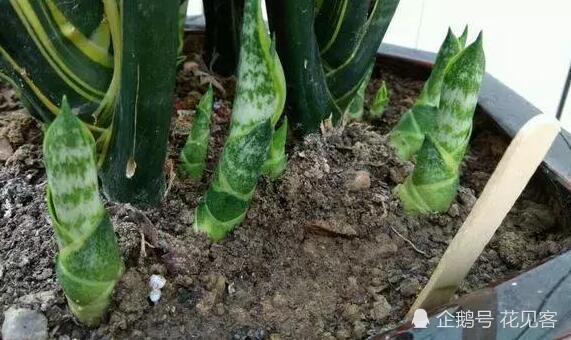Bonsai management of ginseng and banyan

Ginseng banyan, also known as sweet potato banyan, is an ornamental plant of the genus Ficus of Moraceae. The banyan tree is tall and majestic, self-propagating into forest, root system entrenched, evergreen all the year round, is a unique tree species in the subtropics. Ginseng banyan root is similar to ginseng, with natural shape, exposed root plate, luxuriant crown and unique charm, which is deeply loved by consumers all over the world. In the Netherlands, it has been named "China roots" (Chinese root). It is a flower variety with Chinese brand in the world.
Ginseng banyan is characterized by cheap growth, easy growth, dark green, evergreen, beautiful air root, beautiful branch, beautiful skin, beautiful leaf, beautiful root, strong root system, numerous branches and leaves, easy to grow, resistant to pruning and long life.
Ginseng banyan watering should be dry and wet, basin soil should always be kept moist, in summer should be placed in a shady place, but also should often spray water to the leaves. Fertilization depends on the growth trend, the general growth season can be applied every one month or so fully mature thin bean cake water, vegetable cake water, rice sugar water and so on. Prevent cold in winter, prevent sun exposure in summer, and pay attention to disinfestation and disease control all the year round.
Ginseng banyan-its root is like ginseng, it looks good when planting, it is a good gift for birthday.
In terms of soil, it is better to cultivate river sand or sandy soil. In order to make the roots of ginseng banyan big and fat, a little fertilizer should be added, which can be added with a higher proportion of phosphorus and potash fertilizer. The cultivated soil is required to be loose and fertile sandy loam with good drainage rich in organic matter and acidic reaction. Alkaline soil can easily lead to leaf yellowing and poor growth.
Fertilizing 3 to 4 times a year should not be excessive, otherwise it is easy to cause the branches and leaves to grow and destroy the composition and shape of the plant. During the period of branching and sending leaves, watering should be properly controlled, or more spraying and less watering can make the leaves short and thick, and give sufficient light at the same time to make the leaves thick and bright.
When cultivating ginseng banyan, be sure to use seeds to sow seeds in order to grow fat roots. When cultivating ginseng banyan, if you can choose a pot full of ancient interest, it will certainly add to the elegant charm of ginseng banyan.
Its leaves are often susceptible to leaf spot disease, which can be sprayed with 800 times of 70% methyl topiramate wettable powder, and a small number of diseased leaves can be removed and destroyed as soon as possible to prevent it from spreading.
Ginseng banyan bonsai can be changed every 2 years, preferably before leaving the house in spring. First pick out the soil around the flowerpot, and then gently take out the huge root tuber plants, mash part of the persistent soil, cut off some lifeless aging roots, and re-choose fresh, fertile, loose drainage, nutrient-rich culture soil to plant well. As the plant grows, larger flowerpots can be replaced to meet the needs of its normal growth. At the same time of changing the basin, the branches and leaves should be trimmed and adjusted appropriately so that they can continue to maintain a good plant shape. Watering should not be excessive when just changing soil, and then normal water and fertilizer management should be given when the temperature rises to more than 20 ℃.
- Prev

Tiger Pilan used this kind of strong leaf fertilizer to stand upright and easily spend the winter after National Day holiday.
With the improvement of living standards, more and more people will put some green plants at home, and tiger orchid is a very common plant, the leaves are tufted and erect, thick leathery, and there are irregular dark green cloud patterns on both sides.
- Next

Endangered Northeast Three Treasures A fur worth 300 US dollars China prohibits private farming
Speaking of Northeast China, besides ice sculptures, it is estimated that the three treasures of Northeast China are impressive. The three treasures of Northeast China are ginseng, antler and mink skin of Northeast China. This is also a representative specialty of Northeast China. It is the first time that I have ever seen such a thing.
Related
- Wuhan Hospital Iron Tree Blooming Result Was Instantly Frightened by the Gardener Master
- Which variety of camellia is the most fragrant and best? Which one do you like best?
- What is the small blue coat, the breeding methods and matters needing attention of the succulent plant
- Dormancy time and maintenance management of succulent plants during dormancy
- Minas succulent how to raise, Minas succulent plant pictures
- What are the varieties of winter succulent plants
- How to raise succulent plants in twelve rolls? let's take a look at some experience of breeding twelve rolls.
- Attention should be paid to water control for succulent plants during dormant period (winter and summer)
- Watering experience of twelve rolls of succulent plants
- Techniques for fertilizing succulent plants. An article will let you know how to fertilize succulent plants.

